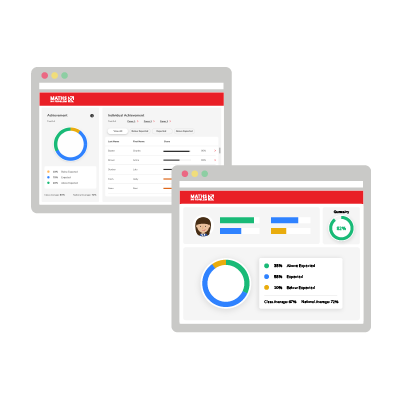Why Assessment for Learning is essential for successful maths teaching
Editor’s Note:
This is an updated version of a blog post originally published on May 17th, 2018
Why Assessment for Learning (AfL) is essential for successful maths teaching
Assessment in maths
It is often said by educators that I speak to that assessment in maths is messy; too populated with drama and fuss, and too difficult to readily access all the important data to improve teaching and increase our children’s understanding. Unsurprisingly then, it can cause some confusion. But assessment in maths is essential for successful learning. If we don’t know what children have learned, then we don’t know how to adapt our teaching and help children move forward.
According to the LKMCo, England’s leading education and youth “think and action” tank, in their 2017 report ‘Testing the Water’, the quality of assessment training is inadequate, and generally only of limited help to teachers:
- Only a third of classroom teachers in England feel ‘very confident’ about assessment.
- One in five classroom teachers would not know where to look for information on assessment if they needed it.
- Under half of teachers received training in assessment as part of their initial teacher training.
AfL Strategies
The report found that teachers spend too much time focusing on summative assessment, when what really matters is conducting diagnostic formative assessments.
Formative assessment and Assessment for Learning (AfL) are often used interchangeably but, more accurately, AfL strategies refer specifically to the collection of approaches and techniques that are commonly referred to as formative assessment. Formative assessment can happen many times in every lesson and involves several methods for encouraging children to express what they are thinking. These methods include:
- Observing
- Listening
- Questioning
- Discussing
- Reviewing their work in progress
Active assessment
Research has shown that high-quality formative assessment has a powerful impact on learning. This assessment for learning happens organically when we, as teachers, work alongside children and help them identify what they know, what they don’t know and more importantly what they partially know. It allows all learners to assess the level of complexity they are working at while engaged in learning.
Teaching is fuelled by immediate ‘live’ information. This allows us to spot gaps, plan the next steps in learning and facilitate upgrades in children’s knowledge and understanding. When an assessment event or activity provides us with solid “live” evidence it can be used as feedback to modify teaching and learning activities. Therefore, good feedback can be very effective to improve and ensures that the assessment supports mastery, attainment and progress.
Assessment for learning is informal, ongoing active assessment. It promotes learning during the learning, not after the event. It differs from summative assessment which is evaluative and primarily designed to serve the purposes of accountability.
Active assessment for learning provides meaningful information because it is learning as it unfolds within the classroom and this can therefore nourish the teaching and the assessment. This is about how thinking, learning and assessment can be joined together in a creative and integrated way. Thinking promotes learning, learning enables assessment to take place and assessment acts as a stimulus to both thinking and learning (Keogh, Dabell and Naylor, 2010).
In a responsive ‘formative’ learning environment, teaching, learning and assessment continuously feed into each other. As Hodgen and Wiliam (2006) note in ‘Mathematics inside the black box’, the purpose of formative assessment “is to help teachers to filter the rich data that arises in class discussion and activity, so that professional judgements can be made about the next steps in learning”. They say that three types of feedback are essential for formative assessment: student to teacher, teacher to student and between students. Crucially, formative assessment cannot be done to children but must be done with them through active talk-rich activities.
A culture that promotes dialogue
AfL helps children be more engaged in the assessment process by involving them directly in identifying, challenging and growing their existing ideas. At the very heart of formative assessment there is a culture that promotes dialogue. Within a discourse community, children can unpack what they know and how well they know it so talking in the language of maths and about maths is essential. However, the difficult part is putting these ideas into practice. In maths, powerful formative assessment techniques are needed to bring children’s ideas to the surface so we can build on their strengths, uncover any maths misconceptions and support knowledge upgrades towards a fuller understanding.
If we want to encourage cognitive conflict, argument and reasoning then we have to provide rich and meaningful opportunities for children to express and discuss mathematical ideas. Activities like deliberate mistakes, odd one out or true-false statements can be used to improve the children’s mathematical literacy.
These collaborative activities provide opportunities for debate and social construction of ideas. They’re designed to help children readily articulate their ideas and have them confirmed or modified in reflective discussions. They also act as a vehicle for formative assessment because they contain problematics, concepts that deliberately provoke thinking, or a maths tension to sustain a discussion. They are particularly effective for assessing the level of sophistication children are working at and they help children intelligently self-assess. They are rich assessment tasks because they provide feedback for both children and teachers that identifies questions children might consider and how they can improve their learning.
Making a success of assessment for learning
Formative assessment opportunities allow you to get a picture of children’s understanding so you can fine-tune your teaching and make appropriate judgements about background knowledge and set suitable challenges. When we as teachers or parents and our children hear the word assessment then it can conjure up images of tests, exams, grades and levels but formative assessment is a million miles away from this. Formative assessment enhances learning during the learning.
We can see assessment for learning as highly responsive and a bespoke tailoring style of teaching, where we adapt and make informed teaching decisions based on the needs of children in a live lesson.
“Successful formative assessment can help us identify problems and begin to fix things in the here and now much more effectively and efficiently.” Craig Barton, How I Wish I’d Taught Maths (2018)
Formative assessment considers what matters most: that what we learn about children’s understanding on a day-to-day basis is vital for successful teaching. It is possibly the most dynamic tool we possess as it provides children with the timely, specific feedback that they need to make adjustments to their learning. It is a continuous, automatic and a natural part of teaching and an integral and intimate part of a teacher’s daily work.
References:
Barton, C. (2018) How I Wish I’d Taught Maths: lessons learned from research, conversations with experts, and 12 years of mistakes. Woodbridge: John Catt Education Ltd
Black, P. and Wiliam, D. (1998) Inside the black box. London: Kings College
Hodgen, J. and Wiliam, D (2006) Mathematics inside the black box. London: nfer Nelson
Keogh, B., Dabell, J. and Naylor, S. (2010) Active Assessment: thinking, learning and assessment in Maths. Sandbach: Millgate House
Transform your maths assessment
Insights — our online assessment tool — gives you instant, powerful data to identify gaps and improve results.

